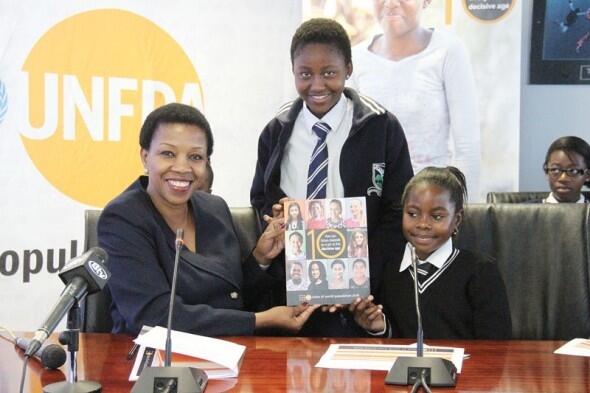The 2016 report makes the case that few, if any, of the Sustainable Development Goals can be achieved if large swaths of humanity are unable to exercise their rights and realise their full potential.
UNFPA Botswana’s Adolescent Sexual and Reproductive Health (ASRH) specialist, Kefilwe Koogotsitse, who presented the report, explained that information surrounding sexuality lagged behind mainly due to ineffective sexuality education in the country.
Some of the Sustainable Development Goals (SDGs) that are particularly dependent on empowering girls now are poverty elimination, achieving good health and well being for all, availing quality education to all as well as achieving gender equality.
Comprehensive sexuality education is therefore seen as quintessential to keeping girls in schools, curbing teenage pregnancies as well as child marriages, eliminating gender-based violence among and thereby promoting girls’ access to opportunities.
“The curriculum is not fully comprehensive in terms of sexuality education, and teachers are not trained to fully deliver on this, and even in instances where they are trained, they are very few,” Koogotsitse said.
This is one of the obstacles to girls’ path through adolescence into adulthood. Last year alone, 407 girls dropped out of school due to pregnancy.
The report, which focuses on and profiles a 10-year-old girl, regarded as a decisive age for the transition from childhood into adolescence feeding into adulthood, says countries with large cohorts of girls also tend to be poorer. That gender discrimination makes life difficult for girls in almost every way, explained UNFPA.
More than half of the world’s 10-year-old girls live in countries with high levels of gender inequality. This means that about 35 million girls are entering adolescence with a fundamental disadvantage and about to face a series of obstacles that boys will not encounter on their way to adulthood, said the report.
“This suggests that a large number of 10-year-old girls are in countries where resources for basic human capital investments, such as education and health, may be stretched,” elaborated Koogotsitse.
The focus on the 10-year-old girl, as explained UNFPA country assistant representative, Mareledi Segotso is that the age is the starting point for the 2030 agenda because in 15 years (the lifespan of this developmental agenda), the 10-year-old girl will be 25 years.
“By then these will be new entrants into the labour force, so they need to have been prepared to adequately participate in the labour market,” she said.
Low enrolment of girls at primary level has been identified as a challenge; as for 104 boys in primary education there are 100 girls. Moreover, low participation of the girl child in science and engineering related fields remains a concern.
Olorato Paseko, a teenage secondary student who spoke at the launch said young adolescent girls continue to face challenges and harsh realities of life such as sexual harassment.
“Child marriages, arranged marriages that lead to school dropouts at a very tender age are some of the challenges young girls deal with in their daily lives, and these result in teenage pregnancies and sexually transmitted diseases,” she decried.
The Maoka Junior Secondary School learner advocated for girls to be accorded platforms to voice out their view, opinions as well amplification of their participation in the development of adolescent strategies.
| By | BABOKI KAYAWE |
MMEGI:


